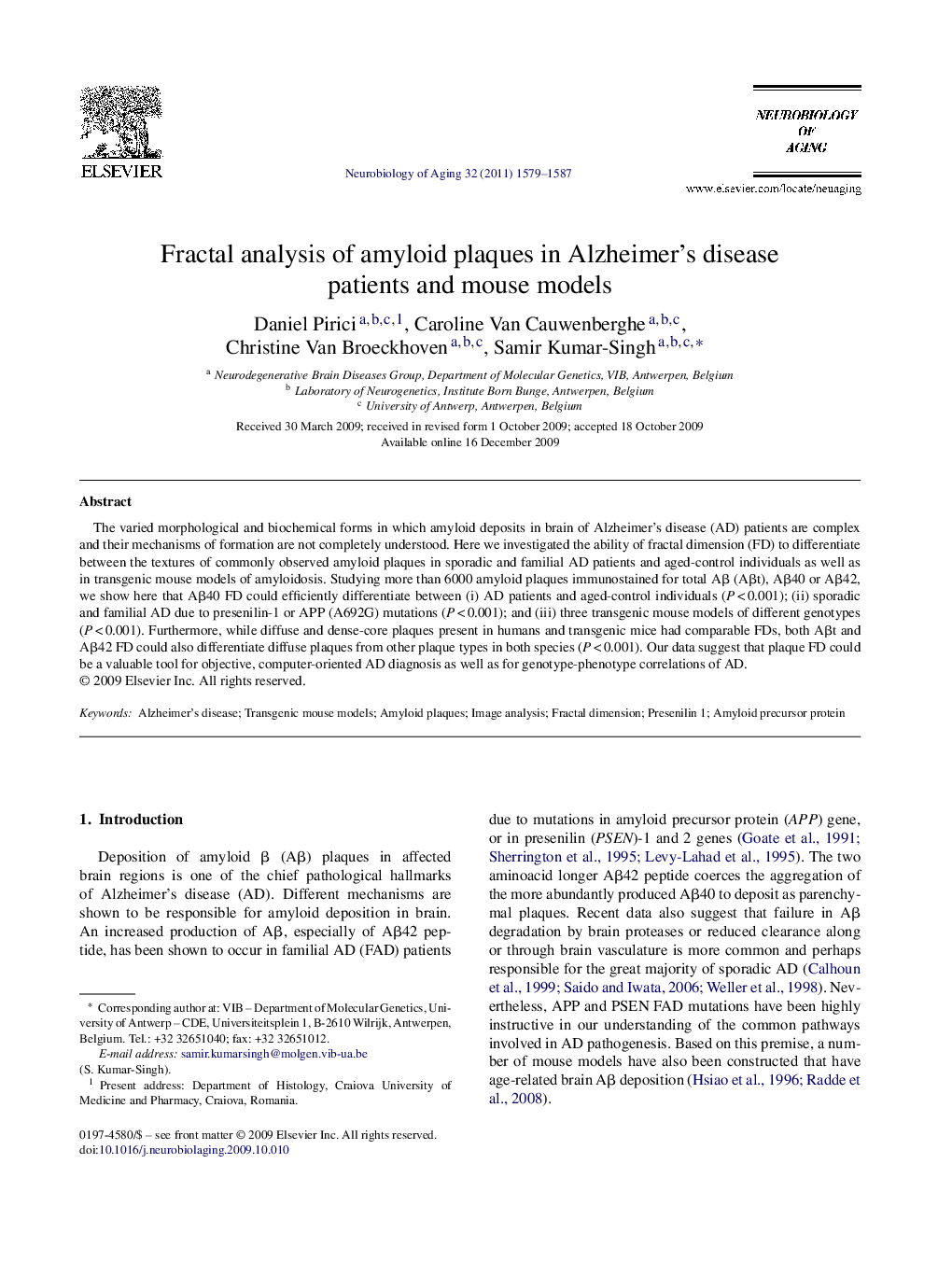| Article ID | Journal | Published Year | Pages | File Type |
|---|---|---|---|---|
| 330169 | Neurobiology of Aging | 2011 | 9 Pages |
The varied morphological and biochemical forms in which amyloid deposits in brain of Alzheimer's disease (AD) patients are complex and their mechanisms of formation are not completely understood. Here we investigated the ability of fractal dimension (FD) to differentiate between the textures of commonly observed amyloid plaques in sporadic and familial AD patients and aged-control individuals as well as in transgenic mouse models of amyloidosis. Studying more than 6000 amyloid plaques immunostained for total Aβ (Aβt), Aβ40 or Aβ42, we show here that Aβ40 FD could efficiently differentiate between (i) AD patients and aged-control individuals (P < 0.001); (ii) sporadic and familial AD due to presenilin-1 or APP (A692G) mutations (P < 0.001); and (iii) three transgenic mouse models of different genotypes (P < 0.001). Furthermore, while diffuse and dense-core plaques present in humans and transgenic mice had comparable FDs, both Aβt and Aβ42 FD could also differentiate diffuse plaques from other plaque types in both species (P < 0.001). Our data suggest that plaque FD could be a valuable tool for objective, computer-oriented AD diagnosis as well as for genotype-phenotype correlations of AD.
